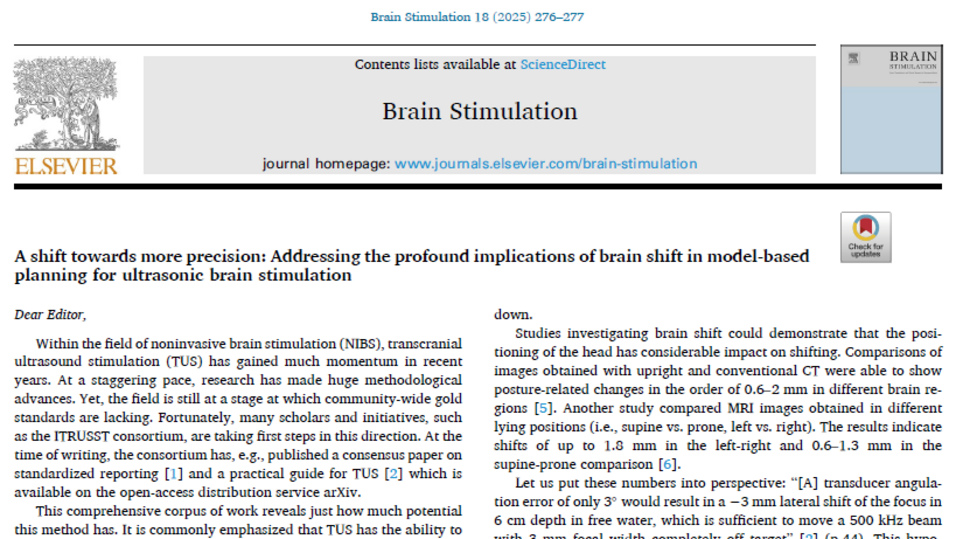We are excited to share that a letter to the editor authored by Franz Roman Schmid and Julia Sophia Crone was published in the Brain Stimulation journal! The letter delves into the implications of brain shift in model-based planning for transcranial untrasound stimulation (TUS), a method celebrated for its unparalleled targeting precision and ability to reach deep brain structures.
TUS has emerged as a frontrunner in the field of non-invasive brain stimulation (NIBS), offering a level of spatial precision unmatched by other methods. However, Schmid and Crone's work sheds light on a potential challenge: the effect of gravity on the brain, known as brain shift. This phenomenon, which alters the position of brain structures depending on head orientation, could introduce a significant source of uncertainty in TUS applications.
Their findings suggest that the discrepancy between MRI-based neuronavigation (typically performed with subjects lying down) and TUS application (often conducted with subjects seated upright) could lead to targeting errors of up to 2 mm. Given the high sensitivity of TUS, even a small shift could undermine its precision, potentially moving the ultrasound beam "completely off target."
To address this issue, the authors propose two key strategies:
- Short-term solution: Align the subject's position during TUS application as closely as possible to the position used during MRI image acquisition.
- Long-term goal: Conduct systematic investigations into brain shift due to head positioning and incorporate these findings into future simulation and neuronavigation software.
This work not only highlights an overlooked challenge in TUS but also paves the way for more precise and reliable applications of this promising technology. The positive reception of this letter by the editors and reviewers underscores the importance of addressing this issue within the TUS community.

